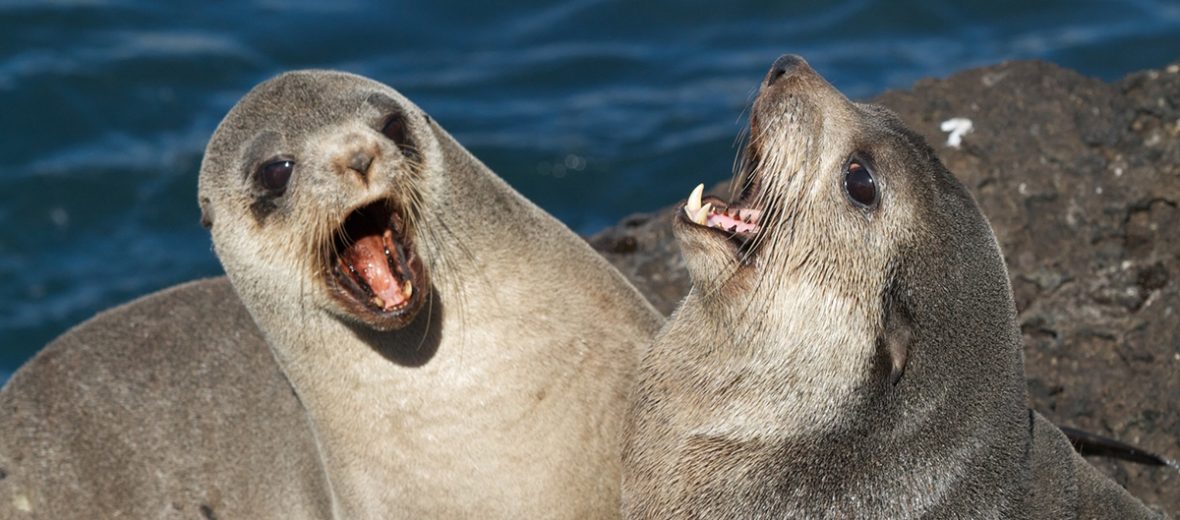
The subantarctic fur seal can be found on land and out at sea near numerous countries. They number an estimated 300,000 wild individuals as of 2023, and have a stable population. These fur seals are seen on the shore lines of these countries: Australia, South Africa, Angola, Argentina, Brazil, Chile, Comoros, Madagascar, Mauritius, Mozambique, Namibia, and New Zealand. Subantarctic fur seals are threatened by overfishing; invasive species, and with them disease; and climate change, which can affect the water temperatures and subsequently their food sources. However, the IUCN lists these critters as Least Concern.
First the Stats…
Scientific name: Arctocephalus tropicalis
Weight: Up to 363.76 lbs.
Length: Up to 5.3+ feet
Lifespan: Up to 25 years
Now on to the Facts!
1.) They were first described by Gray in 1872 in northern Australia. So, that 1 individual was misnamed A. tropicalis, inappropriately, since they aren’t tropical in nature at all.
2.) When hauling out on shore, they prefer boulder beaches and/or rocky shore lines.
3.) A group of seals is called a bob, colony, harem, herd, pod, or rookery.
4.) These fur seals are social and can be found in large colonies.
5.) Colonies are typically broken up into female herds with their pups and bachelor herds consisting solely of males.
But wait, there’s more on the subantarctic fur seal!
6.) When the temperatures are around 65ºF, the males become nocturnal (active at night). When the temps increase, they switch to a diurnal (active during the day) pattern.
7.) Communication is achieved via tactile, visual, and vocal means.
Did you know…?
These fur seals can swim up to 932 miles in search of food!
8.) Females communicate with their pups via vocal and olfactory (smell) methods. Each pup has it’s own unique smell and call that their mother recognizes.
9.) Myctophid fish (lantern fish), squid, octopuses, crustaceans are all on the menu, and sometimes they will prey on Rockhopper penguins and the occasional sea bird.
10.) Being polygynous (1 male mates with multiple females) a single male can manage a harem of up to 20 females.
But wait, there’s still more on the subantarctic fur seal!
11.) Breeding season lasts from November – January.
12.) Females undergo up to a 51 week gestation (pregnancy) that yields a single pup.
Did you know…?
These seals are affected by numerous diseases and parasites, such as Parafilaroides sp., Gammaherpesvirus, Tuberculosis, and Arcanobacterium infections.
13.) As soon as the female births her pup she is ready to breed again.
14.) Pups are fully weaned in up to 11 months.
15.) Their primary natural predators are orcas and sharks.
Now a Short Subantarctic Fur Seal Video!
Be sure to share & comment below! Also, check out the Critter Science YouTube channel. Videos added regularly!
Want to suggest a critter for me to write about? Let me know here.
Some source material acquired from: Wikipedia & IUCN
Photo credit: iNaturalist



